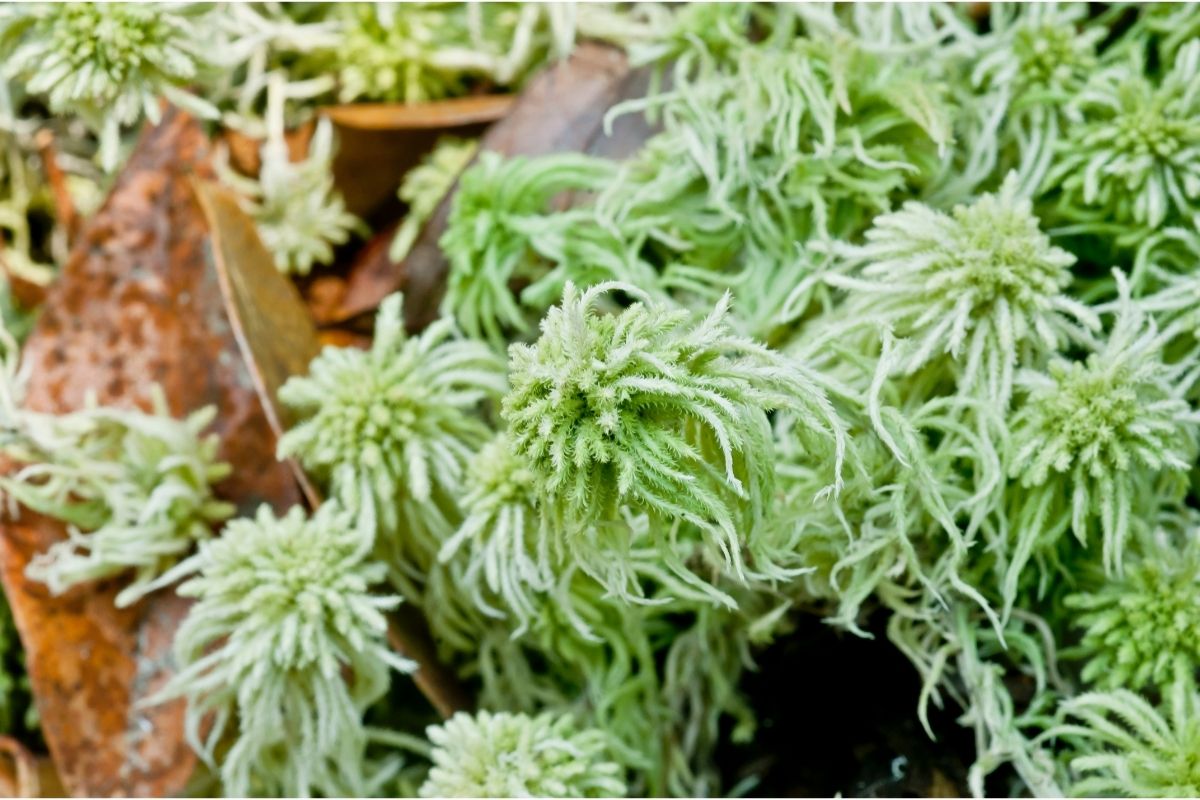Ivy is a great plant for beginners and experienced gardeners. Not only is it beautiful to look at, but it is easy to grow in both water and soil, and it doesn’t require too much care for it to thrive. To make the process even easier, you can even start propagating the plant by yourself with our comprehensive guide on how to propagate ivy!
There is one thing that you need to be aware of before you start the propagating process – you need to take cuttings with sterile tools.
If you use tools that haven’t been cleaned, you run the risk of exposing your cuttings to diseases.

How To Propagate Ivy In Water – Step-By-Step Guide
How To Prepare Your Ivy Cuttings For Propagation
Ivy plants should be taken from a healthy plant. It is always safer to have more cuttings than you think you will require.
Always choose a healthy plant when propagating ivy. Don’t try to propagate an unhealthy plant as this increases the chance of failure.
Decide new growth. Look for lighter-colored leaves, which indicate younger vines. Look for stems that are in better condition but not too woody or brittle. Tough, woody stems are harder to propagate.
Ivy should also be grown in containers, so bear this in mind before finding your cuttings!
How To Take Cuttings?
To take the cuttings, use a sharp clean garden scissor. Cut the vine into sections about 4-6 inches long. Make sure each section has several leaves. You may need to trim off any dead parts of the vine.
Since it is far easier to propagate a shorter vine, cutting long vines into smaller pieces is an alternative method of cutting plants.
Clean, sharp cuts should be made when cutting vines. Cuttings should be kept separate from the main plant. Diseased cuttings can spread disease, so watch out for this.
As well as stripping any dead leaves, you will always need to strip away the bottom leaves from the vine.
This will prevent them from rotting while they are sitting in the water. However, you should try to leave some nodes behind!
You should be careful when removing the bottom two inches of leaves because if you cut too far back, the plant won’t grow properly. Make sure the top half of the stem is exposed.
Preparing The Conditions
Ivy plants should be kept in clear containers such as vases. You can use almost any type of container, but you must make sure it holds enough water.
The clear nature of the container allows you to easily tell when it’s time to transplant the ivy into the soil since you can keep an eye on the roots.
Place The Ivy In water

Using your prepared container, you should put the ivy cuttings securely into the water, making sure they can easily reach as much water as they need.
You will want to place this container in a room that does get a lot of sunlight, but it shouldn’t be placed directly in front of a window as it doesn’t like direct light.
The recommended temperature for ivy cuttings to grow in is between 65-80 degrees Fahrenheit.
One thing to be aware of is that the ivy will drink the water in the container up quickly. You will need to keep topping the container up with water in its growing stage so that the nodes and stem are fully covered.
RELATED: 16 Best East Facing Windows Plants – The Stars Of Rising Sun
Wait For It To Grow
The estimated time for ivy cuttings to grow roots is between four and six weeks.
While you may start to see roots at three weeks, you should still wait another week or two to ensure that it has enough roots to survive in the soil.
Tip: A good rule of thumb is that the roots should be at least two inches long.
Move The Ivy From Water To Soil
When planting it in soil, make sure you put some compost around the base of the plant. You should also use a high-quality potting soil to help its growth.
Ivy plants need a lot of sunlight, but they also need shade. Still ensure that they aren’t kept in direct sunlight, or you risk burning the leaves.
You should water them regularly, but if you let them dry out too much, then they’ll wilt. Make sure the soil drains properly, so it won’t become soggy.
Water the soil lightly until the roots are fully established in its new growing conditions. Then water only if the soil gets really dry.
When you transplant an ivy plant, make sure to cut off the bottom half of the root ball. This will prevent the plant from growing into the ground.
Once you’ve planted your ivy, wait until it grows to about three feet tall before trimming it back.
Common Growing Problems With Ivy
One thing we will say is that you shouldn’t be alarmed if your ivy runs into some growing pains as you are getting used to looking after the ivy.
Ivy plants need plenty of water but not too much. Make sure your ivy plants are in pots with good drainage. If they’re root bound, try repotting them into a larger pot.
Ivy plants tend to be very sensitive to water levels. Too much or too little water can cause problems such as leaf drop and wilting.
Leaves Turning Brown

Browning ivy leaves are a sure sign of overwatering. Waterlogged roots can’t deliver nutrients or moisture to the leaves, so they wilt and drop off.
Leaves Turning Yellow
Yellowing leaves can be an indication of drought conditions. Water your plants regularly, and aim to water about once a month. Don’t let your plants sit in wet soil for too long.
RELATED: 15 Best North Facing Window Plants For A Green Oasis In Shady Room
Preferred Conditions
All types of ivy are usually hardy plants that will adapt to a wide range of garden conditions, even if they aren’t ideal.
Preferring sunny or partial shade, ivy plants require a lot of water during dry periods. Ivy needs water to grow well.
You should give it a spritz every day. During dryer months, you should do this more often.
Growing ivy indoors requires proper lighting and ventilation. Containers should be made of porous material such as plastic or ceramic.
Some varieties thrive in more humid conditions than others, so you should research your particular type of ivy plant first!
Common Ivy Types
If you are looking for a variety of ivy species to grow yourself, these types are brilliant to start with and will look exceptional in your garden!
English Ivy is a hardy plant that grows in USDA zones 5 through 8. It produces greenish-yellow flowers and dark purple berries.
It grows up to 50 feet tall. It prefers a shaded to partially shaded location. It is used as a ground cover and grown in containers as an indoor houseplant.
Algerian Ivy is a hardy plant that produces bright green leaves in summer and turns bronze in fall. It grows up to 30 feet tall and tolerates shade to partial sun. It works well as a houseplant or as a ground cover.
Persian Ivy is an evergreen plant that grows up to 50 feet tall. It tolerates light shade to full sun. It’s used as a ground cover, an alternative to grass, and a houseplant. It also grows up walls and trellises.
Propagating Ivy In Sphagnum Moss

Sphagnum moss is a type of plant that grows in wet areas. It is used to make plants grow faster.
It also helps them to survive longer. It is very useful because it keeps the roots moist and protects them from drying out.
Some people choose to use this when they transplant the ivy from the water to the soil, which helps the ivy retain as much moisture as it can in the early growing stages.
To Sum Up
Propagating ivy is a very simple process, but it does require a lot of time and patience. The ivy cutting you use should be on the shorter side, and it should be stripped of its bottom leaves.
This reduces the risk of rotting and disease while it is being kept in the water, and it also allows the nodes to fully absorb the water. This is where your roots will grow from!
Ivy doesn’t like direct sunlight, but it does tend to like warm temperatures and lots of space.
Frequently Asked Questions
How Difficult Is It To Propagate Ivy In Water?
Ivy is a plant that grows well in water. It spreads quickly and easily by sending out roots. Because the plant itself doesn’t require too much maintenance, propagating ivy is also incredibly simple.
All you need to do is ensure it has enough water in the early stages, which is what allows the roots to grow. From there, you can easily transplant it to soil and have it as a houseplant or decorative plant.
Can You Propagate Ivy Without Rooting Hormone?
While you don’t need a rooting hormone to help your ivy grow, as it is a very hardy plant that doesn’t need much attention at all, this type of aid does ultimately increase the chances of the cutting turning into a full plant.
We would recommend using rooting hormone if you have tried to propagate ivy before and all the attempts have been unsuccessful.







